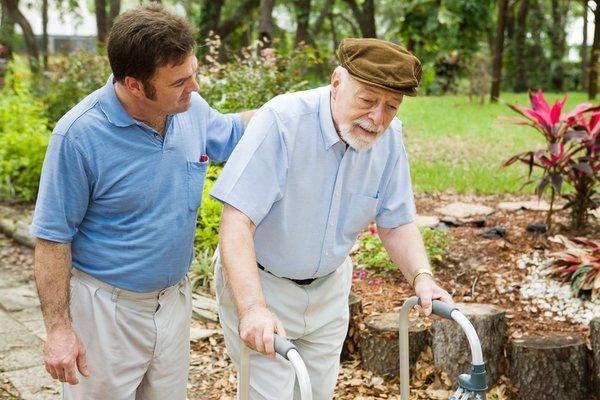In the activity area of the community, we often see elderly people leisurely strolling, many of whom have a common trait: hands behind their backs. Unlike young people whose arms swing naturally while walking, what reasons lie behind this difference?
Firstly, walking with hands behind the back is a way for the elderly to alleviate discomfort caused by skeletal aging. With age, calcium loss and joint degradation lead some elderly to face osteoporosis, making them prone to falls and fractures when walking. The spine gradually curves due to this, and if the arms hang down swinging, it may exacerbate back pain. Conversely, walking with hands behind their backs makes them feel more comfortable, reducing discomfort while walking.
Secondly, walking with hands behind the back also helps elderly individuals maintain body balance. As age advances, not only does the physical hardware such as joints and bones age, but the brain and nervous system also decline, affecting body coordination and balance. The action of walking with hands behind the back provides backward support to some extent, reducing the tendency to lean forward, gradually evolving into their habitual gait to maintain stability and prevent falls.
Although the posture of walking with hands behind the back may seem sluggish, it is actually quite beneficial for the elderly: it not only helps maintain balance and prevent fall injuries but also indirectly improves breathing difficulties in some elderly due to the mild stretching of the back muscles, alleviating hunchback conditions. Therefore, walking with hands behind the back has become a comfortable and reasonable choice for many elderly individuals, with no adverse effects on their health.
Of course, for safety reasons, elderly individuals should pay attention to not taking overly large steps and maintain a moderate walking pace. In addition, in daily life, they can try various walking methods to diversify their exercise routine, such as relaxing the shoulders, walking with slightly bent arms swinging naturally, or moderately attempting tiptoe walking, which can gently stimulate foot acupoints and benefit kidney health. However, it is important to do so within one’s capabilities, gradually adapt, and ensure safety.
In conclusion, walking with hands behind the back is a common and beneficial habit for the elderly. While ensuring safety and under personal conditions allow, exploring different walking styles can further promote physical health.


